Android Central Verdict
The Xiaomi 14 retains the same design as its predecessor, and the 6.3-inch AMOLED panel is the ideal size — it isn't as small as the Zenfone 10 or as massive as the OnePlus 12. You get the latest hardware, IP68 water resistance, a decent-sized battery that lasts all day, 90W charging with 50W wireless charging, and a software that isn't as annoying to use as previous versions. But the biggest upgrade is at the back; the Xiaomi 14 has a trio of 50MP cameras that take magnificent photos and videos, and you're basically getting a Pro model at the cost of the standard variant.
Pros
- +
Ideal size
- +
Top-notch hardware
- +
Outstanding main camera with stellar auxiliary lenses
- +
Smooth 120Hz AMOLED panel
- +
All-day battery with 90W charging and 50W wireless charging
- +
IP68 dust and water resistance
Cons
- -
Design won't be to everyone's liking
- -
Software still has its share of issues
- -
Won't get timely software updates
Why you can trust Android Central
The Mi 10 Pro was a turning point for Xiaomi; while the Chinese manufacturer was making for flagships for the better part of a decade, it wasn't until the Mi 10 series that it delivered a device that went up against the best that Google, Samsung, and Huawei had to offer at the time.
Xiaomi made huge strides in just about every area in the intervening four years, and it's the cameras that have received the lion's share of attention. Xiaomi teamed up with Leica 18 months ago to give its imaging efforts a boost, and it has led to some pretty remarkable results — the Xiaomi 13 Ultra continues to be the best camera phone around, and Xiaomi's camera tuning is one of the best in the industry.
So it isn't surprising to see that Xiaomi isn't changing things too much with the Xiaomi 14; the phone has the same design as last year, with Xiaomi positioning the device for one-handed use. What's interesting is that Xiaomi is taking a leaf out of OnePlus's playbook — the Xiaomi 14 has the same auxiliary cameras as the Xiaomi 13 Pro, and that makes it a much more versatile choice, similar to the OnePlus 12.
Because of that, Xiaomi isn't launching the Pro variant of the Xiaomi 14 globally; the Xiaomi 14 is the default choice in most markets, and it will be joined by the Xiaomi 14 Ultra in select regions. I didn't use the standard variants of the Xiaomi 12 and Xiaomi 13 as much as the Pro models in the last two years, but this time around, I switched to the Xiaomi 14 as my daily driver for two weeks, and here's why I think it is a viable alternative to the OnePlus 12.
Xiaomi 14: Pricing and release date
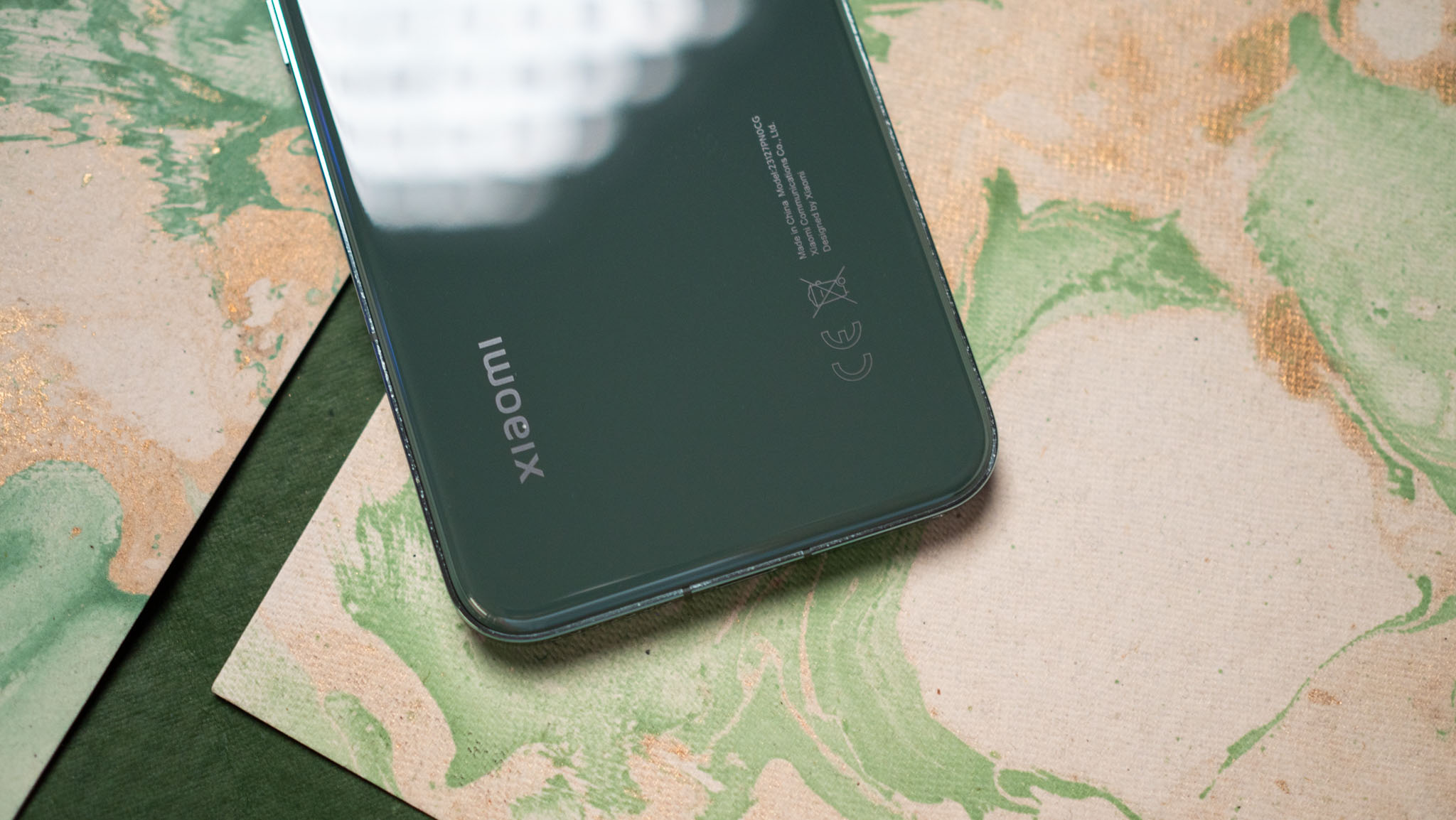
Xiaomi unveiled the Xiaomi 14 series in its home market back in October, and the devices are launching globally at Mobile World Congress. Xiaomi also introduced a Xiaomi 14 Pro alongside the standard model, but that won't be releasing outside China this time around. That said, the Xiaomi 14 Ultra will be debuting globally in the coming weeks, and that will be the flagship offering outside China.
Xiaomi doesn't usually launch the Ultra model globally, so it's good to see that we're getting the Xiaomi 14 Ultra outside China, even if it comes at the cost of the Pro model. Considering there aren't many differences between the standard variant and the Pro model this year, it makes sense that Xiaomi is just launching one variant globally, and again, the Ultra is available to those that want the best that the brand has to offer in 2024.
The Xiaomi 14 is starting out at €999 in the region for the 12GB/256GB edition, and that is in line with what the Xiaomi 13 cost last year. With an Indian launch slated for March 7, we should know more about what the phone will cost in the country shortly.
| Category | Xiaomi 14 |
|---|---|
| OS | HyperOS 1.0.9.0, Android 14 |
| Display | 6.36-inch LTPO AMOLED, 120Hz, HDR, Dolby Vision, 1000 nits (HBM), 3000 nits (HDR) |
| Chipset | Qualcomm Snapdragon 8 Gen 3, Adreno 750, 4nm |
| RAM | 12GB LPDDR5X |
| Storage | 256GB, 512GB UFS 4.0 |
| Rear camera 1 | 50MP Light Fusion 900, f/1.6 1/1.31-inch 23mm, Dolby Vision, OIS |
| Rear camera 2 | 50MP f/2.2 14mm, wide-angle lens, 115-degree FoV |
| Rear camera 3 | 50MP f/2.0 75mm telephoto, 3.2x optical zoom, OIS |
| Front camera | 32MP f/2.0, autofocus |
| Ingress protection | IP68 dust and water resistance |
| Connectivity | Wi-Fi 7, Bluetooth 5.4, global 5G bands, NFC, dual-band GPS |
| Security | Optical in-screen sensor |
| Audio | USB-C, stereo sound, 24-bit/192kHz, Snapdragon Sound, AptX HD, AptX Adaptive |
| Battery | 4610mAh battery, 90W HyperCharge charging, 50W wireless charging |
| Dimensions | 152.8 x 71.5 x 8.2mm, 193g |
| Colors | Black, White, Jade Green |
Xiaomi 14: Design
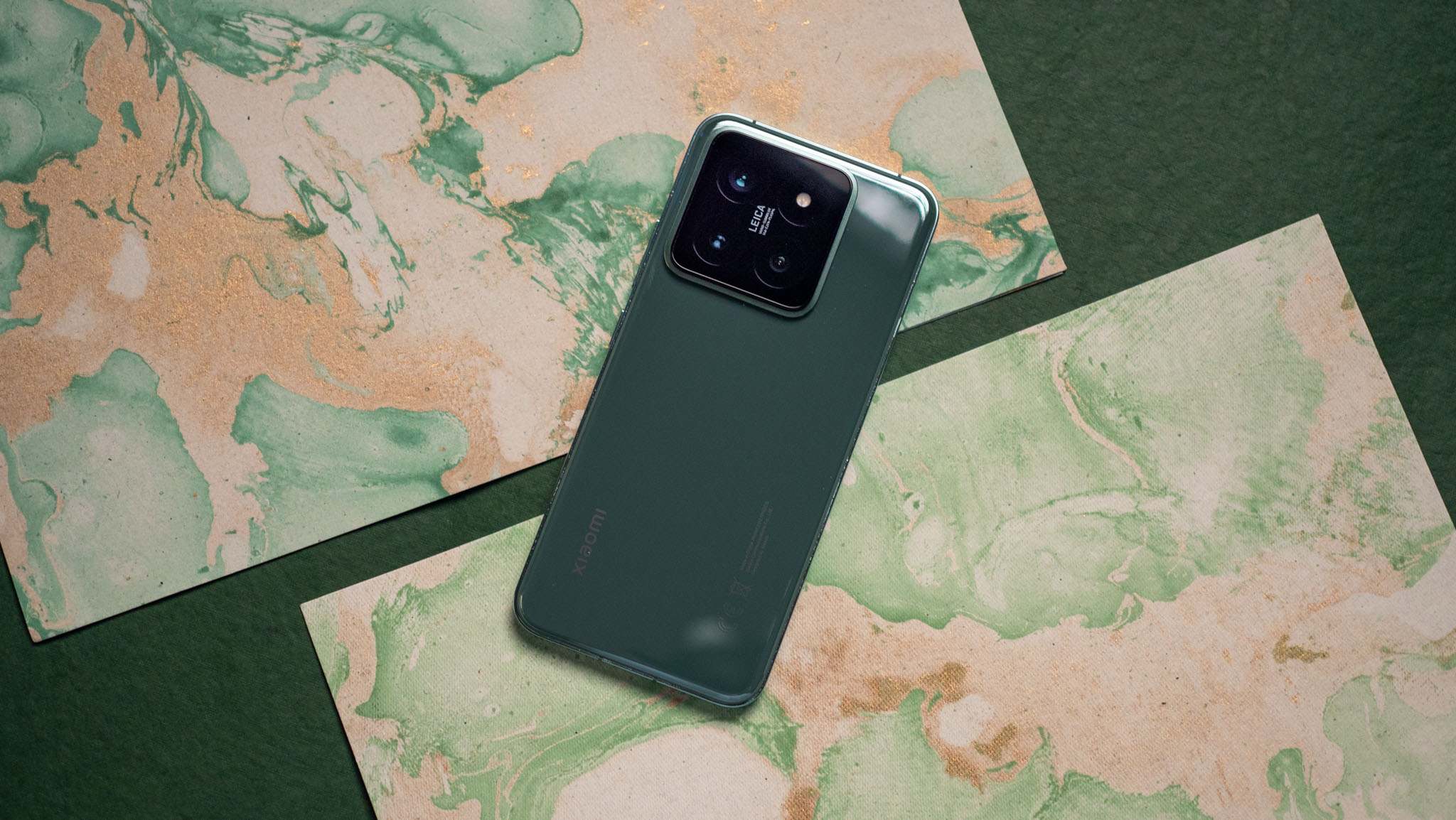
Xiaomi is known for changing its designs on a yearly basis, but the Xiaomi 14 retains the same design as its predecessor — down to the dimensions — and that means you get the same boxy sides and a glossy back that gets smudged if you look at it wrong. The camera housing is still gigantic, and it retains the square pattern, but it is a little cleaner this time around, and it has a metal band encircling the island.
The camera housing juts out a bit more than last year, but because of the sheer size, it doesn't make the phone wobble when you're using it on a table. There are three color options this time — Jade Green, Black, and White — and the green variant has a dull sheen that doesn't stand out quite as much as some of the other devices I used this year. The Flowy Emerald OnePlus 12 looks much more striking, and it is much better to hold.
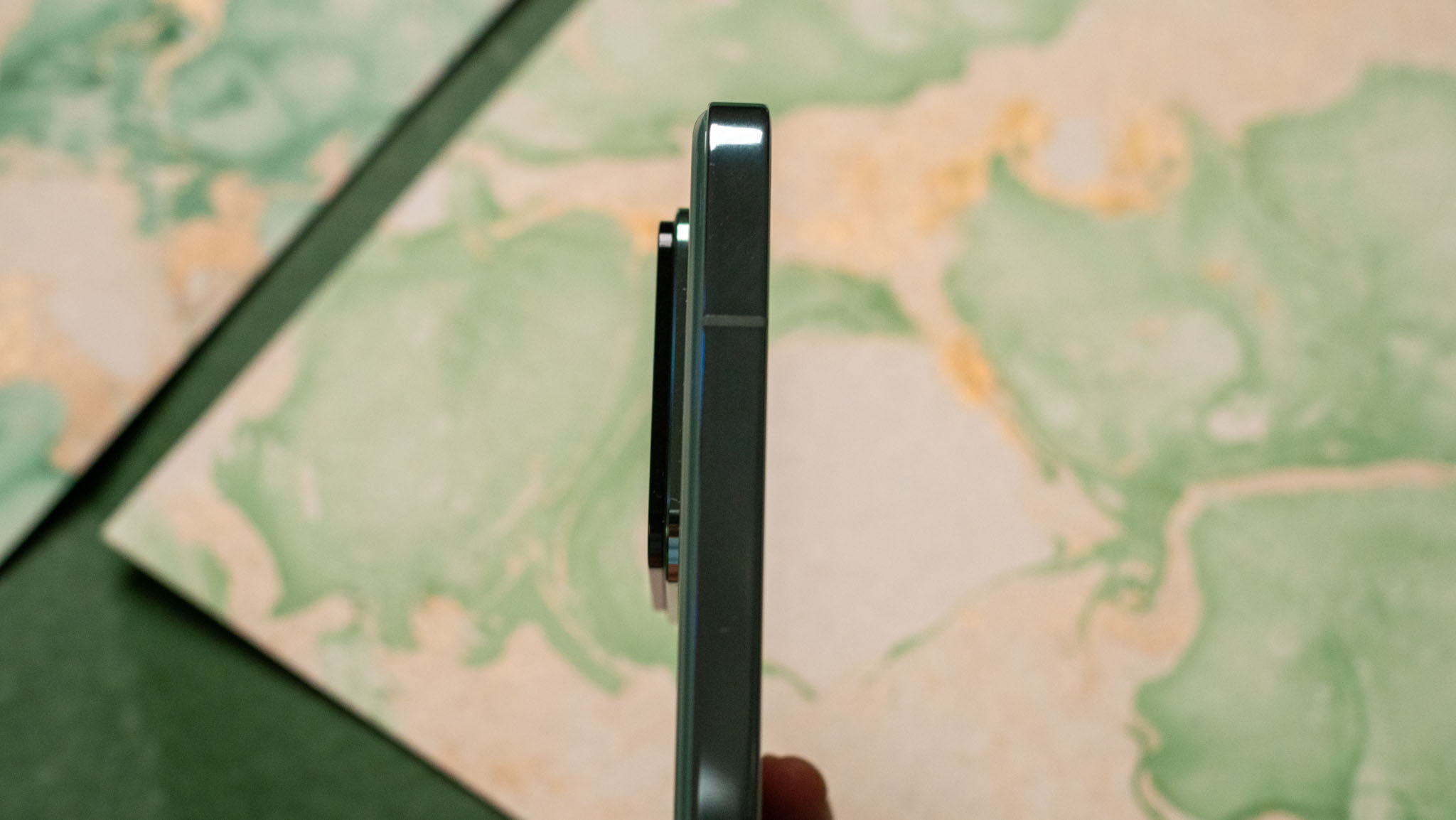
Part of the problem is the flat sides; they make it uncomfortable to hold the device, and even though it is significantly smaller than other 2024 flagships, it doesn't have a great in-hand feel. Even the iPhone 15 Pro Max has beveled edges that make it easy to hold, but Xiaomi hasn't made any allowances in that area.
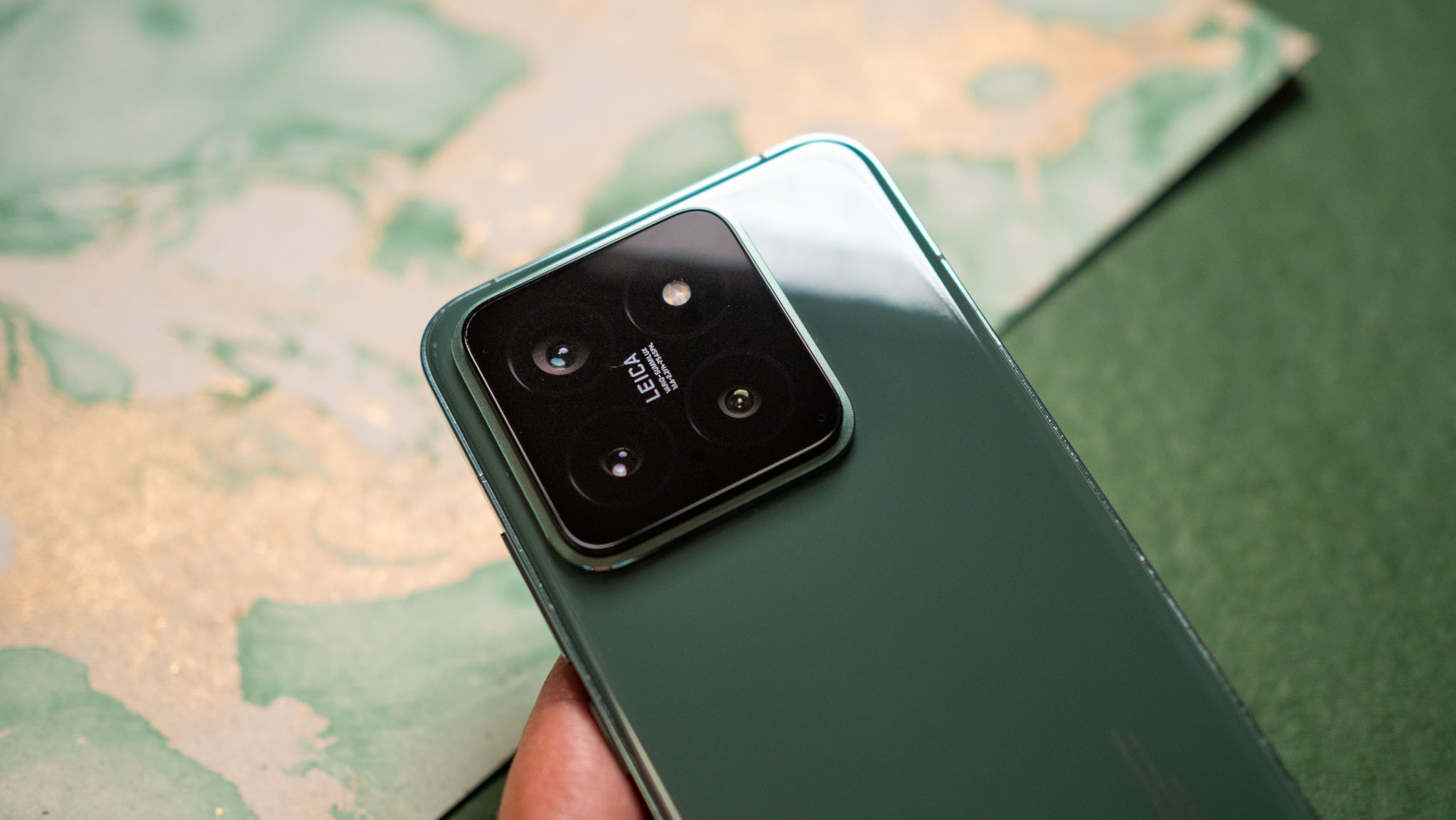
Another annoyance is the glossy finish. The Xiaomi 14 uses a glass back with a glossy coating, and it gets covered up in smudges very easily. The metal sides also have the same coating, and I have to wonder if anyone at Xiaomi actually tested the device before putting it in production to see how the design choices affect usability.

Xiaomi had a terrific design aesthetic two years ago on the Xiaomi 12 series, with the smooth curves, rectangular camera housing, and frosted glass designs giving the phones a lot of character. But the brand instead chose to emulate what Apple and Samsung were doing, and switched over to flat sides last year, resulting in devices that are objectively more uncomfortable to use. You get a slight curve on the back of the Xiaomi 14 as well, but it isn't do much to alter the feel of the device.
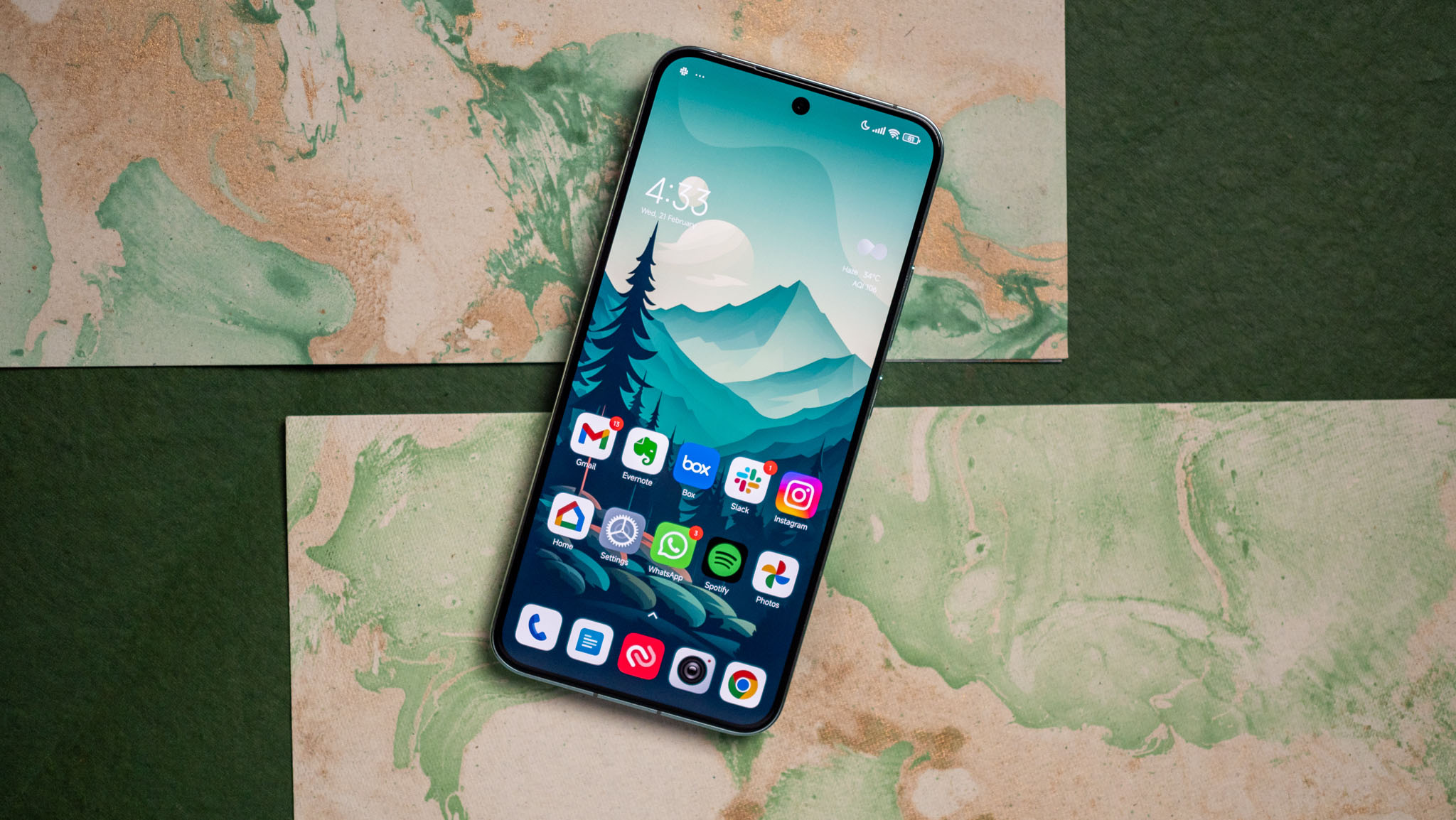
That said, the phone has a lot going for it in terms of stature; it isn't quite as diminutive as the Zenfone 10 or Galaxy S24, but it forms the ideal middle ground between those devices and behemoths like the Galaxy S24 Ultra. While I'm not a fan of the design, the Xiaomi 14 has excellent fit and finish, and I didn't notice any issues in this area.

The model I'm using has the same color throughout, so you get the same green hue on the aluminum sides as well. The power and volume buttons are on the right, and they're ideally located where your thumb rests on the side. The SIM card tray sits at the bottom next to the USB-C charging port and the speaker, and unlike the Xiaomi 12 series, you don't get identical channels with stereo sound — the secondary speaker is tucked away just beneath the top bezel.
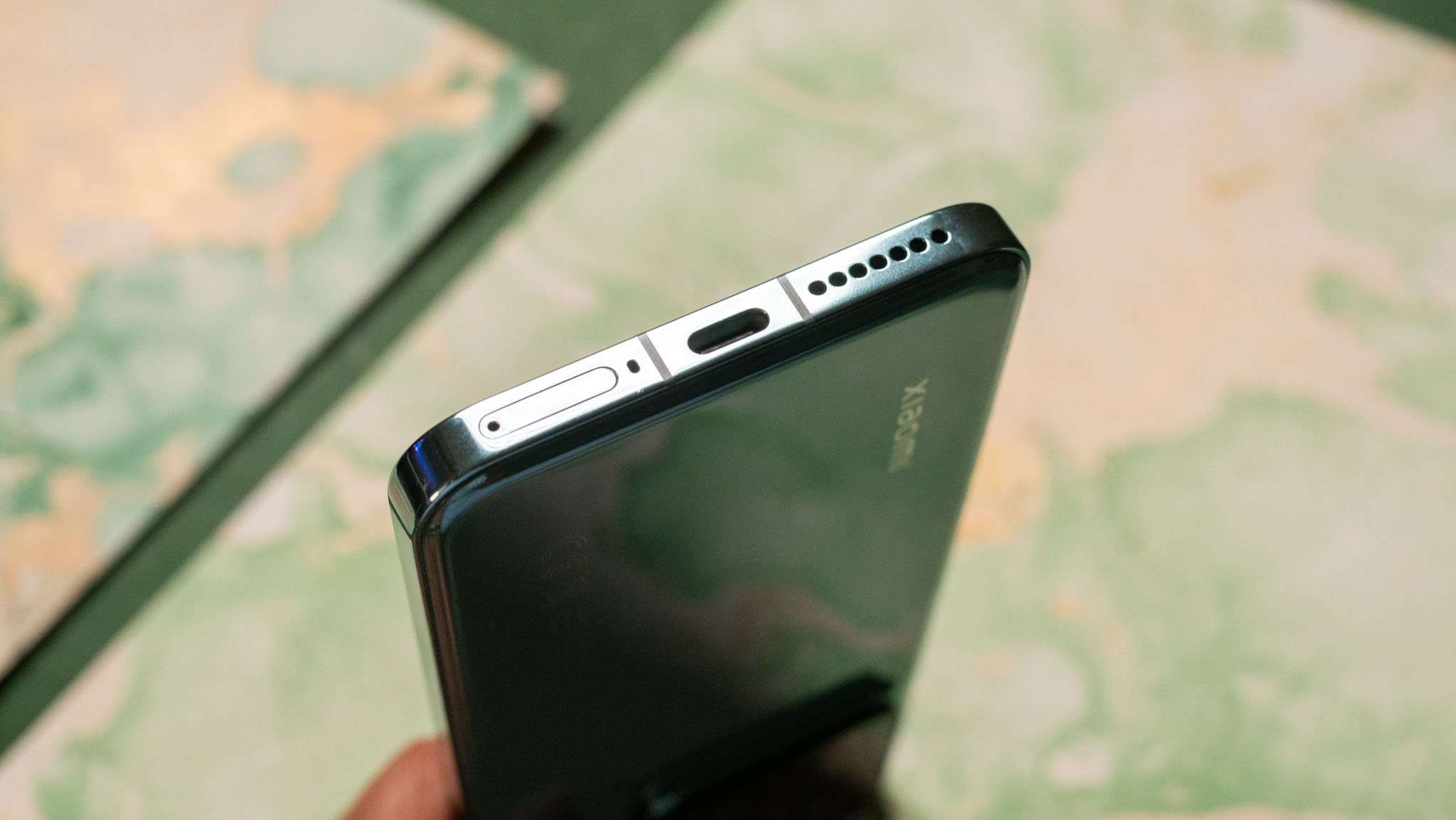
If you're eyeing the device, I'd suggest getting the black variant; that model has a matte finish, and should be easier to manage in daily use. On that subject, Xiaomi doesn't mention what screen protection it uses at the back of the Xiaomi 14, but it is on par with Gorilla Glass Victus; the phone took a few tumbles during the testing window, and it came away unscathed.
The Xiaomi 14 gets IP68 dust and water resistance as standard, and that's great to see. Xiaomi has been consistent in this regard — unlike other Chinese brands — and all the models in the Xiaomi 14 series get the same level of ingress protection.
I've often ridiculed Xiaomi in the past for changing its designs yearly, and it's ironic that the brand is finally starting to use a consistent aesthetic across generations at a time when it really should move to an entirely new design language. What's particularly annoying is that the Redmi Note 13 Pro+ got a redesign this year that makes the device look much more premium, and if anything, that device — which costs less than half as much — upstages the Xiaomi 14 considerably.
Xiaomi 14: Display

Xiaomi is retaining the same 6.36-inch screen size with the Xiaomi 14, but it is using a new panel that gets much brighter. The phone gets an LTPO AMOLED screen with 120Hz refresh that is able to go up to 3000 nits in HDR content, and that's a significant increase over the 1900-nit brightness managed by the Xiaomi 13. Of course, the entire panel doesn't get that bright; just a few zones manage to go up to that figure, and that too in short bursts.
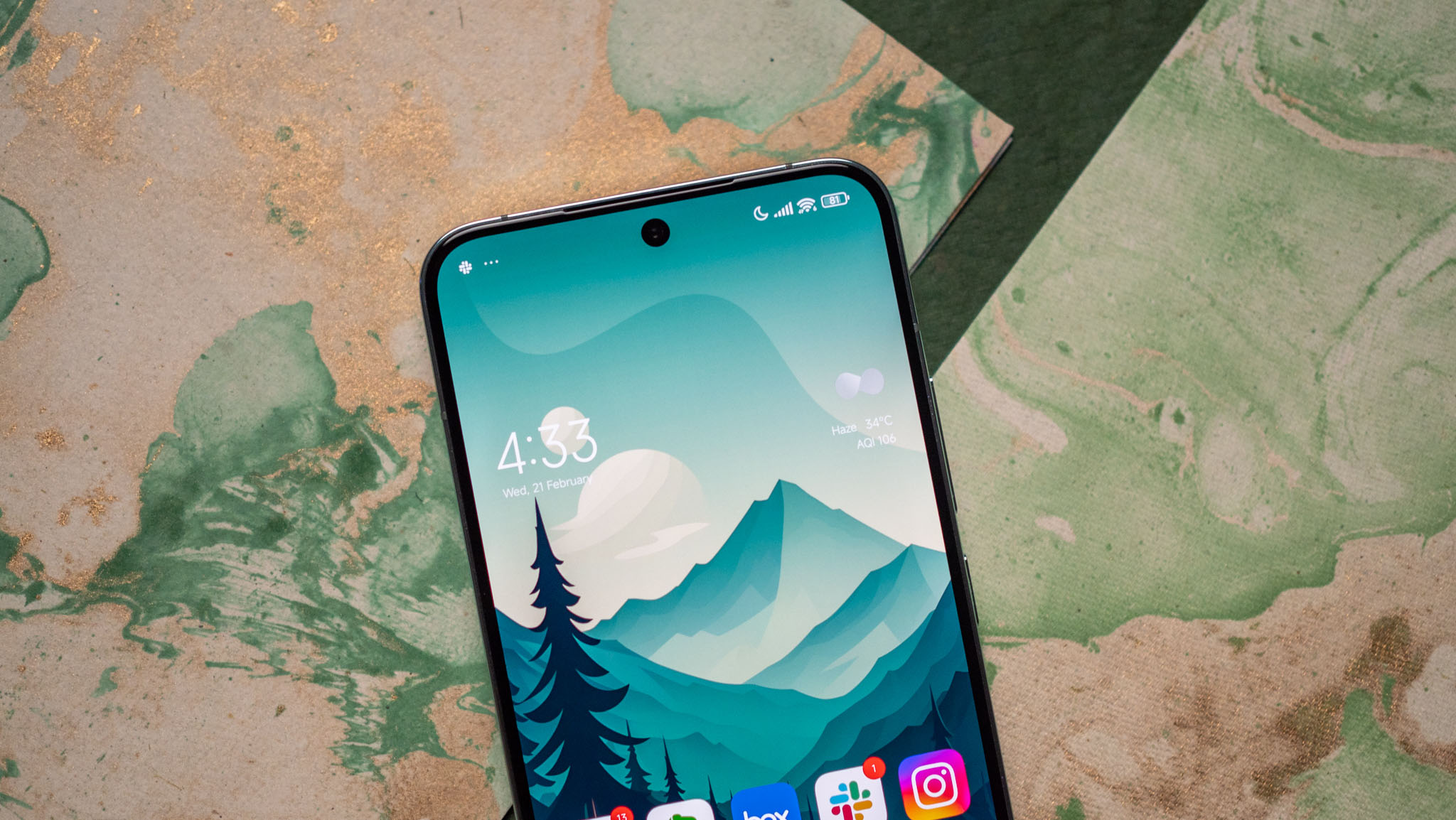
But even in daily use, the Xiaomi 14 has stellar brightness levels, and I didn't see any issues whatsoever. Xiaomi always does a good job calibrating its phones out of the factory, and that's no different with the Xiaomi 14; you get good color vibrancy out of the box, and you can adjust the color balance by heading into the settings. You can choose between Original colour pro, Vivid, Saturated, and an advanced mode that lets you choose between DCI's P3 or Adobe sRGB.
There's the ability to manually adjust color warmth as well, and dynamically change colors based on ambient light conditions. The Xiaomi 14 has an anti-flicker mode that is designed for those with PWM sensitivity issues, and you get the standard reading mode.
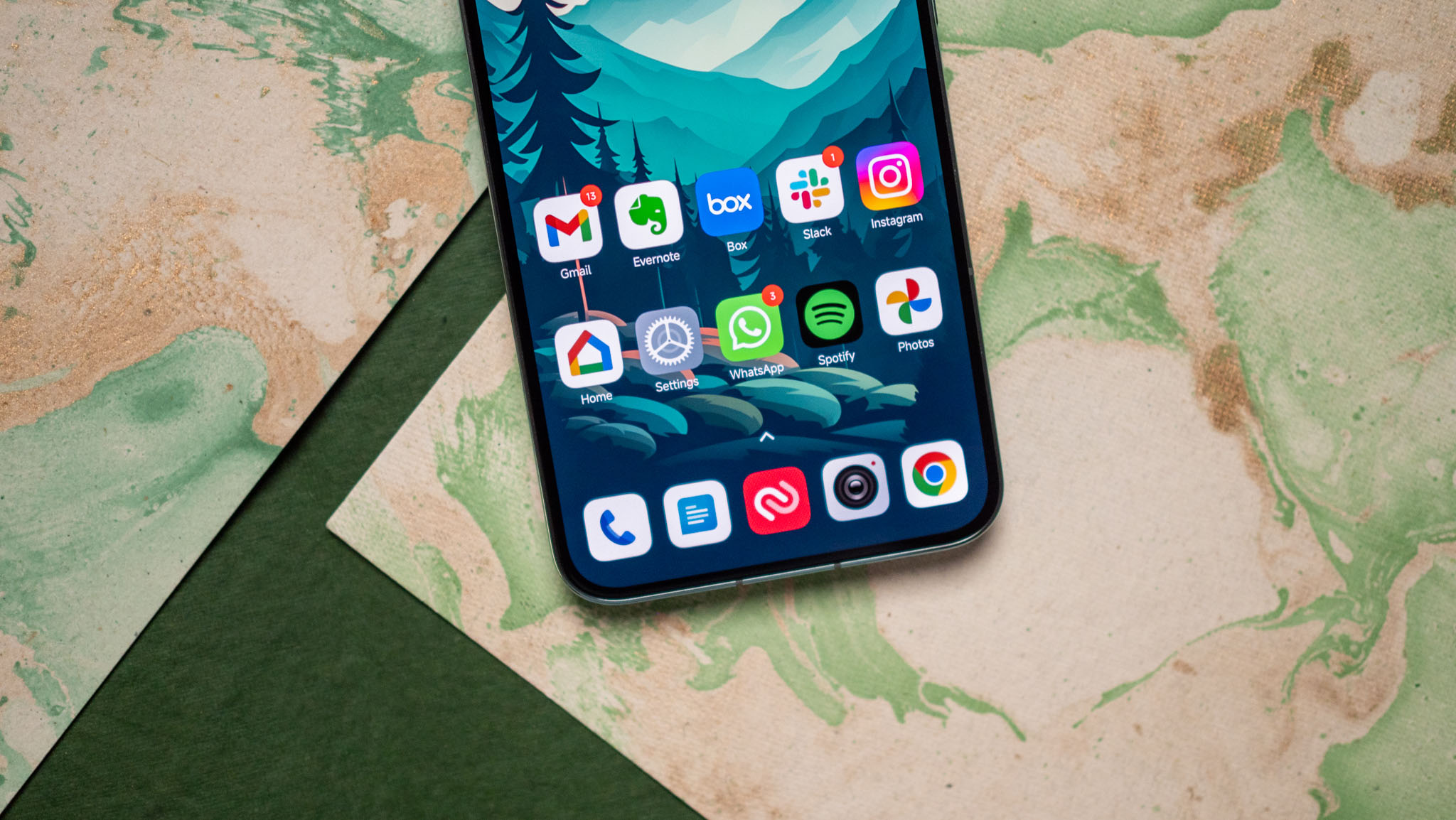
The always-on mode is unchanged to previous Xiaomi devices, and you get the same styles and customization options. On the whole, using the display on the Xiaomi 14 is highly enjoyable, and the size of the panel combined with the color vibrancy make it a good choice for reading text and playing games.
While the screen size hasn't changed, Xiaomi reduced the bezels by a fraction, and the resolution is slightly higher at 2670 x 1200. Xiaomi isn't very restrictive when it comes to playing games at 120fps, and that makes gaming highly enjoyable on the device. On the whole, there are no issues with the phone, and in the time I used the Xiaomi 14, I liked the size of the device quite a bit. If you don't need 6.8 or 6.9-inch screens, this is a great middle ground.
Xiaomi 14: Performance
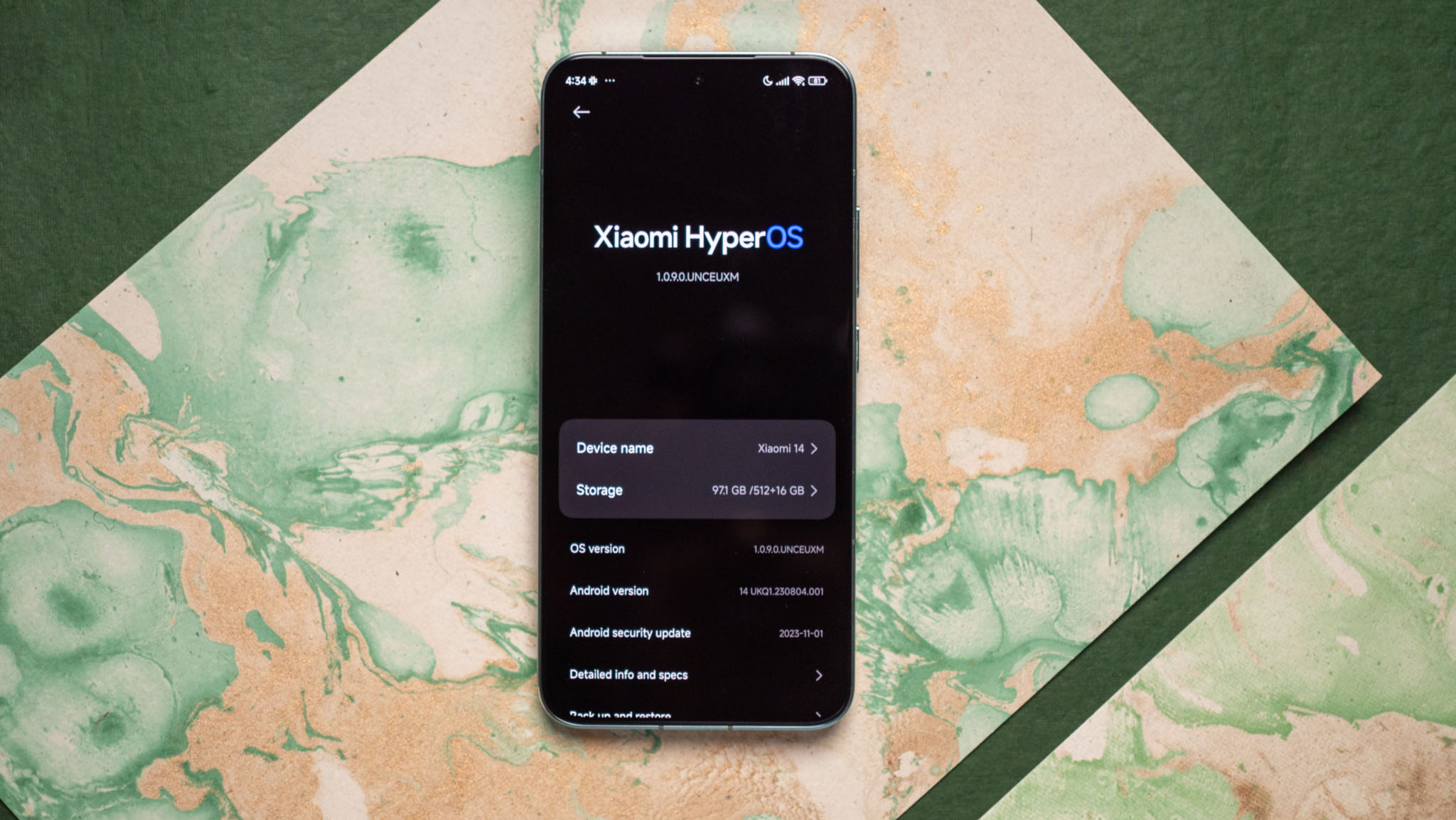
Like the best Android phones, the Xiaomi 14 is powered by the Snapdragon 8 Gen 3. The base model comes with 12GB of RAM and 256GB of storage, and there's also a 12GB/512GB version that's launching globally. Xiaomi sent me a 16GB/512GB model, but that isn't launching in all global markets, and the 1TB variant is exclusive to China. All variants use LPDDR5X RAM modules and UFS 4.0 storage.
I didn't run into any slowdowns in the two weeks I used the Xiaomi 14, and the phone held up incredibly well in daily use as well as gaming. Xiaomi phones in the past had a tendency to be unnaturally slow and poorly optimized for the hardware, but that thankfully isn't the case on the Xiaomi 14, and the phone is just as fluid as the Xiaomi 13 Ultra in usage scenarios.
| Category | Nubia Z60 Ultra | Xiaomi 14 | OnePlus 12 |
|---|---|---|---|
| PCMark Work 3.0 (Overall) | 20530 | 16397 | 12542 |
| PCMark Work 3.0 (Web Browsing) | 20402 | 15896 | 10157 |
| PCMark Work 3.0 (Video Editing) | 8628 | 7865 | 6057 |
| PCMark Work 3.0 (Writing) | 25584 | 20111 | 16945 |
| PCMark Work 3.0 (Photo Editing) | 49807 | 32443 | 23586 |
| Geekbench 6 (single-core) | 2140 | 2220 | 4729 |
| Geekbench 6 (multi-core) | 6622 | 6608 | 4062 |
Xiaomi still doesn't allow 3DMark testing, so I wasn't able to run the usual gaming-focused tests. That said, I didn't see much in the way of overheating after an hour's worth of gaming, and the phone delivered stable framerates throughout. So even though the device is smaller than its rivals, it isn't thermally constrained, and that's great to see.
The Xiaomi 14 isn't missing out in terms of connectivity either, and the device has Wi-Fi 7, Bluetooth 5.4, NFC, Xiaomi's standard IR blaster, dual-band GPS, and all the AptX codecs, including AptX HD and AptX Adaptive. Xiaomi is one of a select list of manufacturers that leverages Qualcomm's Snapdragon Sound audio suite, so if you have audio gear that uses the requisite codec, you'll be able to use it with the Xiaomi 14.
What's changed this year is the switch to the USB-C 3.2 standard, with Xiaomi bringing all of its high-end devices to the same standard — it was limited to the Xiaomi 13 Ultra last year. Talking about the 13 Ultra, the Xiaomi 14 uses a similar X-axis vibration motor, and it delivers excellent feedback. I didn't see any issues with calls or data connectivity, and the device is just as fast as the OnePlus 12 in daily use.
Xiaomi 14: Battery life

The Xiaomi 14 has a 4610mAh battery, and while that's smaller than what you get on most phones these days, it has no issues lasting a day even with heavy use. Xiaomi started using in-house designs to ensure battery longevity, and the Xiaomi 14 uses the Surge P2 and Surge G1 to control the battery's charging and overall management.
With medium use, I was able to get the Xiaomi 14 to last a day and a half comfortably, and like other 2024 phones, there's no battery anxiety whatsoever. And when you need to charge it, the Xiaomi 14 takes just 34 minutes to charge the battery, hitting the halfway mark in 13 minutes.
Xiaomi continues to bundle a charger in the box, and it can be used to charge other devices and accessories. What's particularly noteworthy is that the device also gets 50W wireless charging, and this puts it on par with the OnePlus 12. I didn't test the wireless charging as I couldn't locate the charger Xiaomi sent with the Mi 11 (you have no idea how many chargers I have), but the underlying tech itself hasn't changed, and Xiaomi touts a 46-minute charging time with its official 50W charger.
Xiaomi 14: Cameras
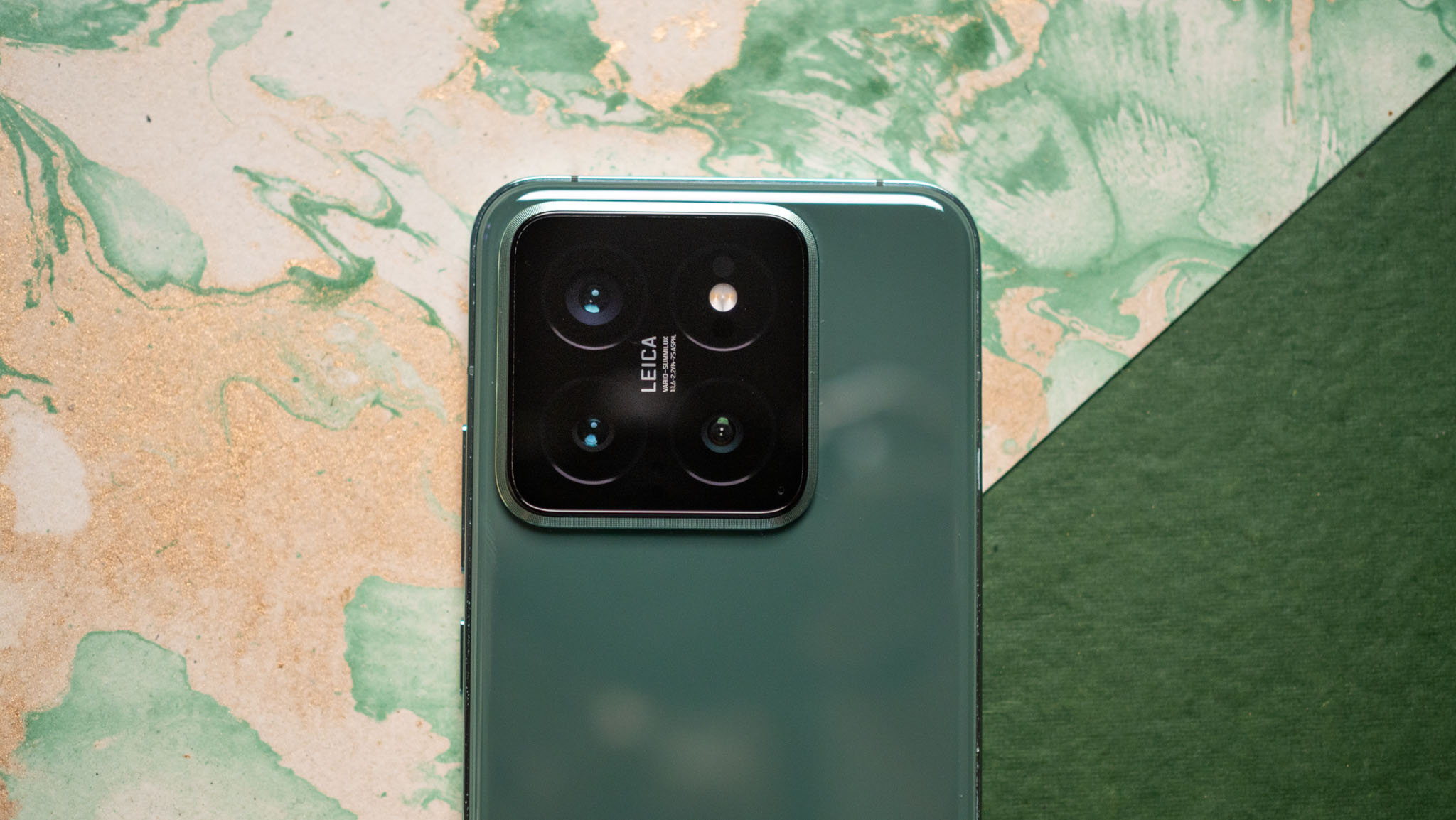
If there was a defining characteristic to Xiaomi's 2023 portfolio, it was the cameras. The Xiaomi 13 Ultra raised the bar in this segment thanks to a combination of a massive 1-inch sensor and terrific tuning, and Xiaomi's building on that with the Xiaomi 14 series. The Xiaomi 14 switches to a Light Fusion 900 imaging module made by OmniVision, and it is a 50MP f/1.6 1/1.31-inch sensor with PDAF and OIS.
While the sensor isn't as big as the one on the 13 Ultra, Xiaomi is counting on better sensitivity to make a difference. The rest of the cameras get a sizeable upgrade, with the phone touting a 50MP wide-angle lens and a 50MP telephoto with 3.2x optical zoom and OIS. If those numbers look familiar, it's because these are the same auxiliary sensors that were used in the Xiaomi 13 Pro last year — it's no wonder Xiaomi isn't releasing the Pro variant globally this year.
A big part of what makes Xiaomi's cameras stand out is the Leica collaboration; there's a lot of custom effects and modes available, and the tuning changes significantly based on what you select. You'll need to use Leica Vibrant or Leica Authentic as the go-to choice, and I tend to go with the Vibrant mode — it makes colors look a bit more saturated.
You get a good selection of lenses in Portrait mode, and the 50mm Swirly bokeh lens in particular does a fabulous job with portrait shots. The camera interface isn't different to what you get on other Xiaomi phones, with the modes arranged at the bottom and toggles for the various lenses, Google Lens, timer, HDR, and beauty effects on the viewfinder.
The Xiaomi 14 does a stellar job with videos, with all three lenses able to shoot 4K video at 60fps. There's a steady video mode and the ability to shoot videos of fast-moving objects, and you get HDR — switching to HDR has much better dynamic range, but you can't use any of the other modes.
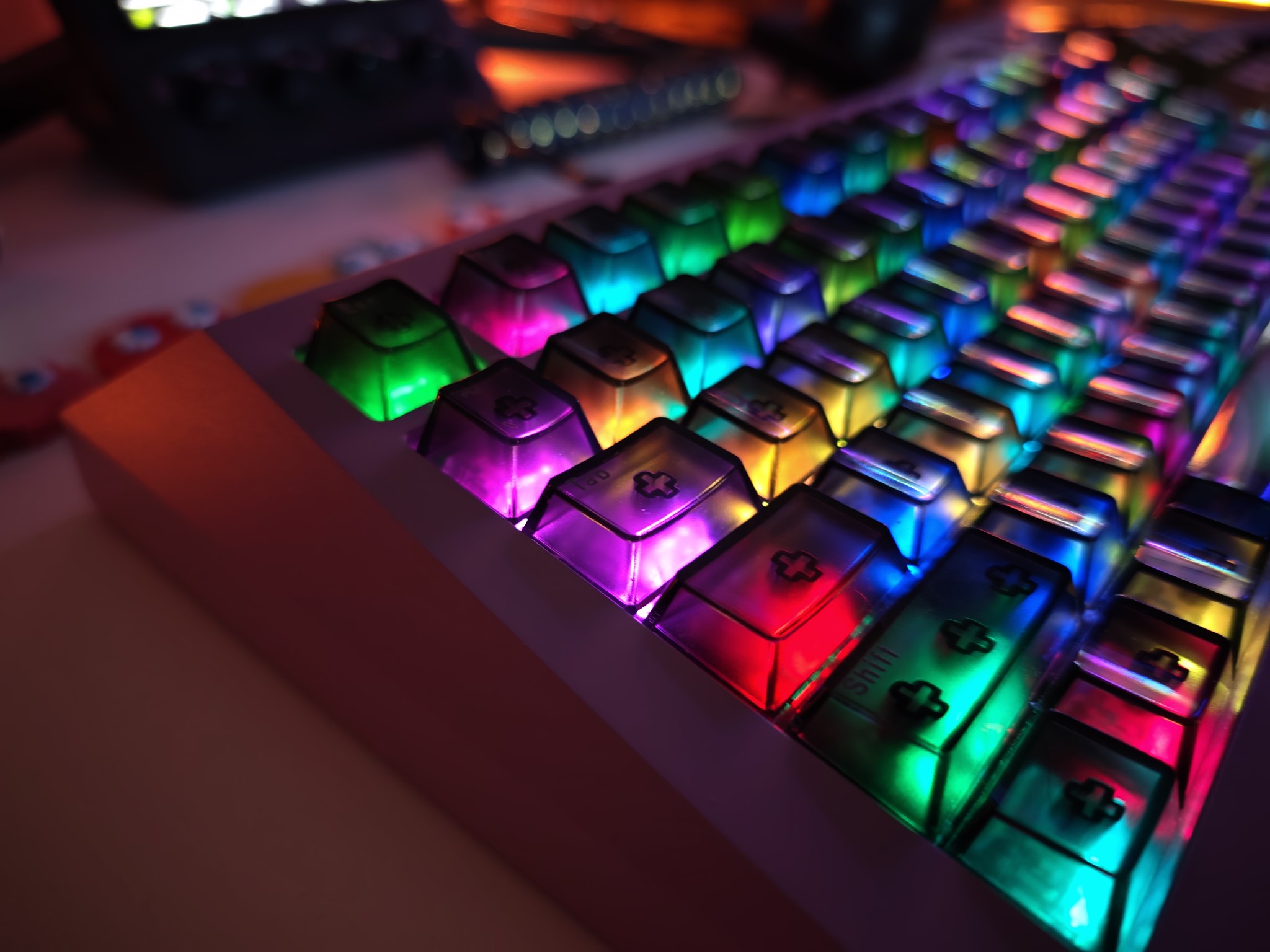

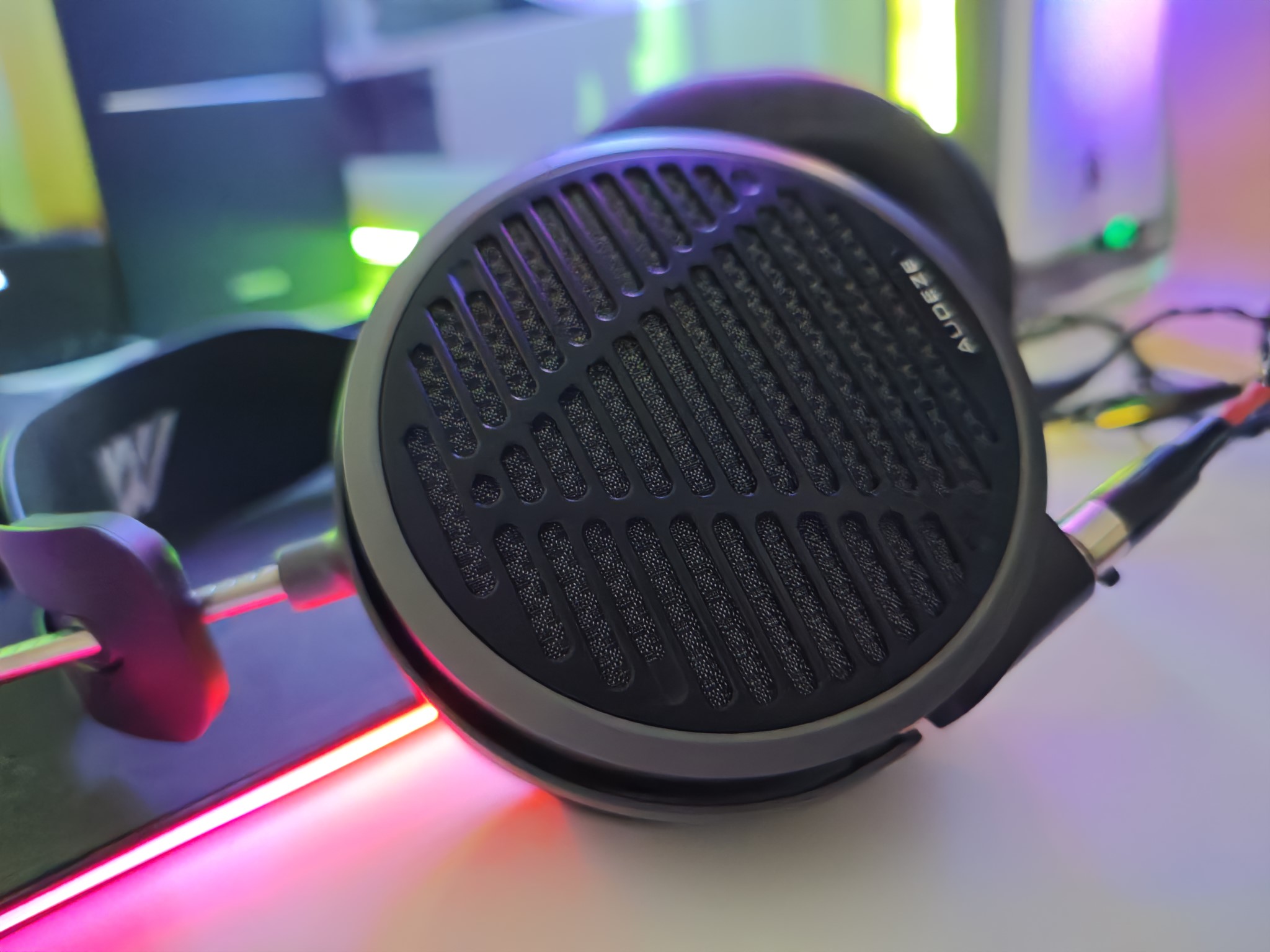

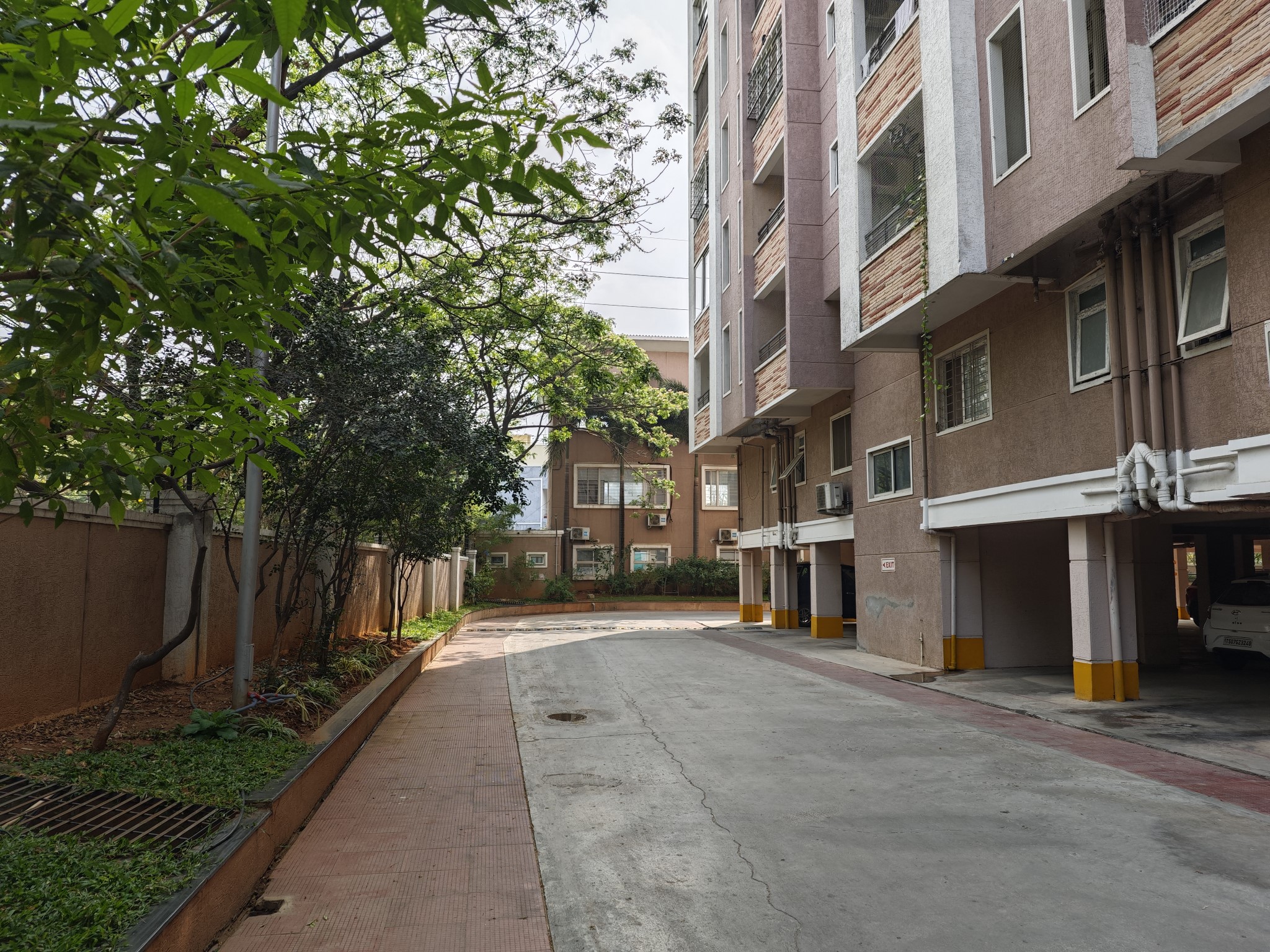







The Xiaomi 14 does a fantastic job in daylight scenarios, delivering shots with excellent dynamic range and color vibrancy. You get granular details, good foliage rendition, and no visible noise. It locks in on a subject easily, but I noticed a few instances where it blew out highlights as it couldn't decide what to focus on — this isn't an issue most of the time.
The wide-angle and zoom lenses also hold their own in most scenarios, and you get usable shots at up to 5x. There is visible noise at 10x and you don't get anywhere as much in the way of detail, but the phone does a much better job than its predecessors in this area.
The new imaging sensors are terrific in low-light scenarios; the resultant shots are noticeably better than last year, and you get good color accuracy and details and minimal noise. There is fringing on the sides in shots with no ambient lighting, but on the whole, I think Xiaomi has the edge against the OnePlus 12 in low-light. I'm going to highlight both devices in an upcoming post, where I'll go into a little more detail around how the cameras on the two devices differ.
I take a lot of portrait shots, and the Xiaomi 14 is one of the best phones in this area. It still isn't as good as the Pixel 8 Pro, but it comes close, and the ability to use various lenses is a big deal. In a similar vein, the phone does a good job with fast-moving objects, but it still isn't quite on the same level as the Pixel 8 Pro.
The Xiaomi 14 has considerable upgrades over its predecessor in this area, and it can easily hold its own against the best Android phones.
Xiaomi 14: Software
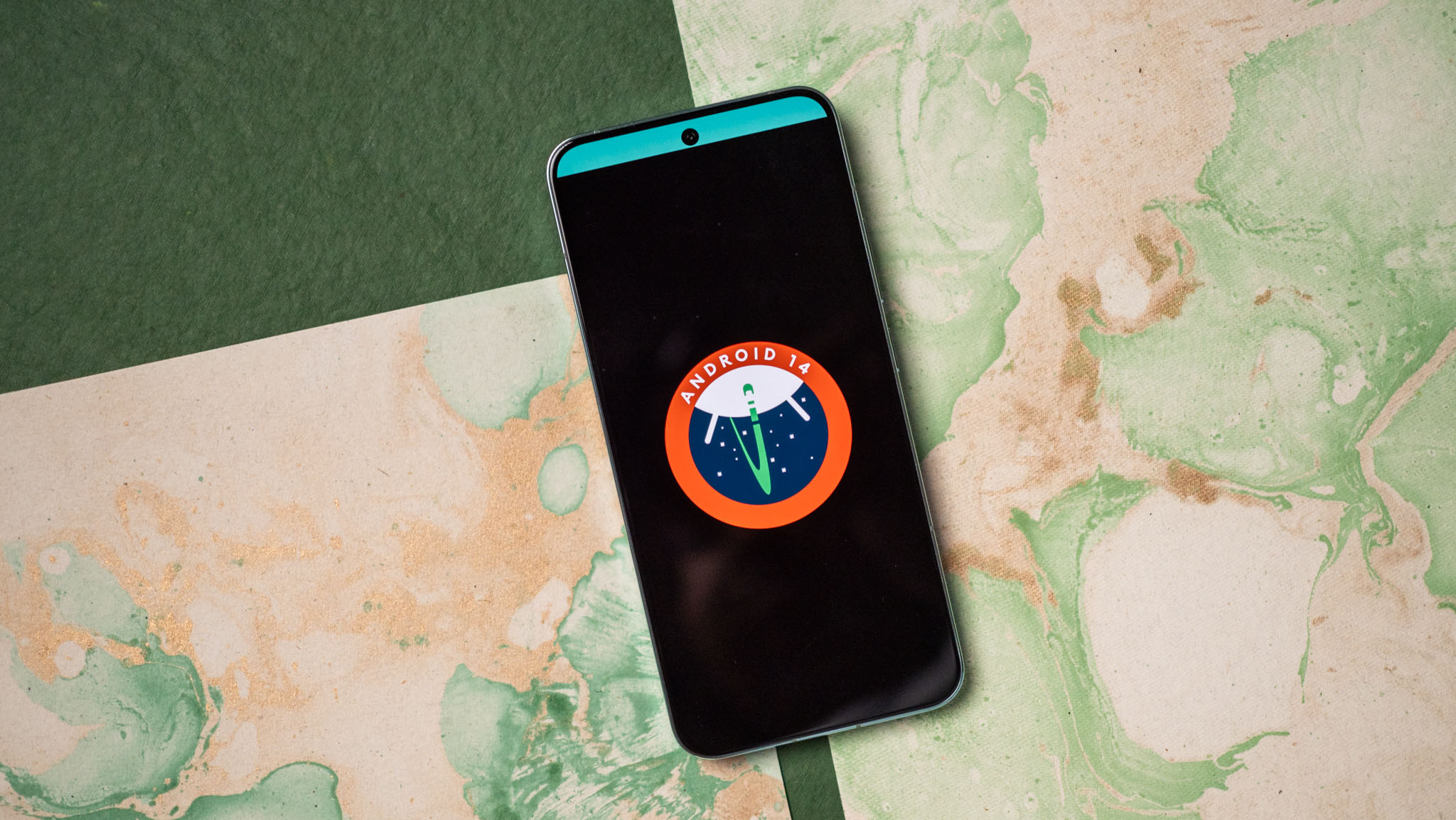
Xiaomi made a big deal of its software overhaul, and the Xiaomi 14 comes with HyperOS 1.0.9.0 based on Android 14 out of the box. That said, you'll be hard put to notice any changes in MIUI; the installation flow is identical to that of MIUI, and other than a change of name, I couldn't see a whole lot of difference after setting up the device.
Instead of limiting itself to system-level changes, Xiaomi should have used this opportunity to give its software a brand new design, because MIUI was starting to look stale. But the brand didn't do that, instead using the same UI while making it smoother and better optimized. The one thing that's changed is the notification pane; you now get a split notification shade with the Control Center to the right that hosts the toggles, and the notifications sit in their own pane.
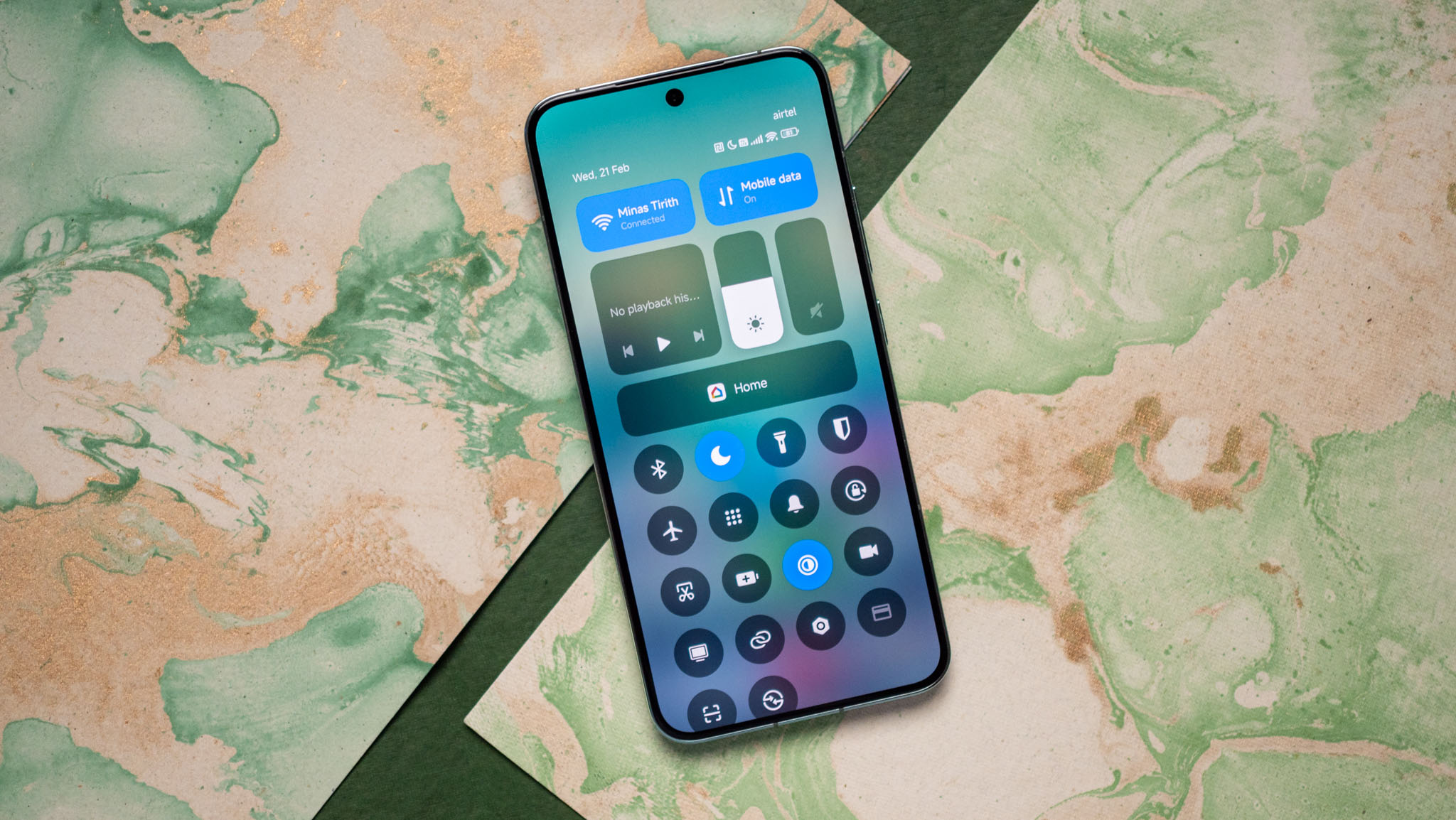
Xiaomi had this system for a while now, but you could always switch back to the standard Android-style notification pane — that isn't possible. What's worse is that the toggles section doesn't have any labels, and it is infuriating; I add a lot of custom toggles, and having to locate them without the text labels takes an additional few seconds, and every time I accessed the toggles, I came away frustrated with the design change.
There's also a new MiSans system-wide font that looks a little cleaner than the standard Roboto that's used on most phones, and the settings page has better organization. That said, oft-used settings are still not where you'd think to look; the setting to change the screen wake time isn't located in the display settings, but the lock screen menu.
The overview menu is arranged vertically by default, but you can switch to a horizontal style. The app drawer is unchanged from MIUI, you still get a decent amount of bloatware, but it can be uninstalled. While there isn't anything new on the design front, the interface is fluid in daily use, and there aren't any ads.
Instead of a brand-new interface, HyperOS is a lateral move from MIUI; if you're coming from an older Xiaomi phone, there isn't anything here that will be new.
On that note, Xiaomi continues to be painfully slow at delivering software updates. The Xiaomi 14 will get four guaranteed Android OS updates and five years of security updates, but there's no telling when you'll actually get the update. The Xiaomi 13 Ultra — Xiaomi's best phone of 2023 — is still on Android 13, so I have no confidence in Xiaomi rolling out updates in a timely manner.
Xiaomi 14: The competition
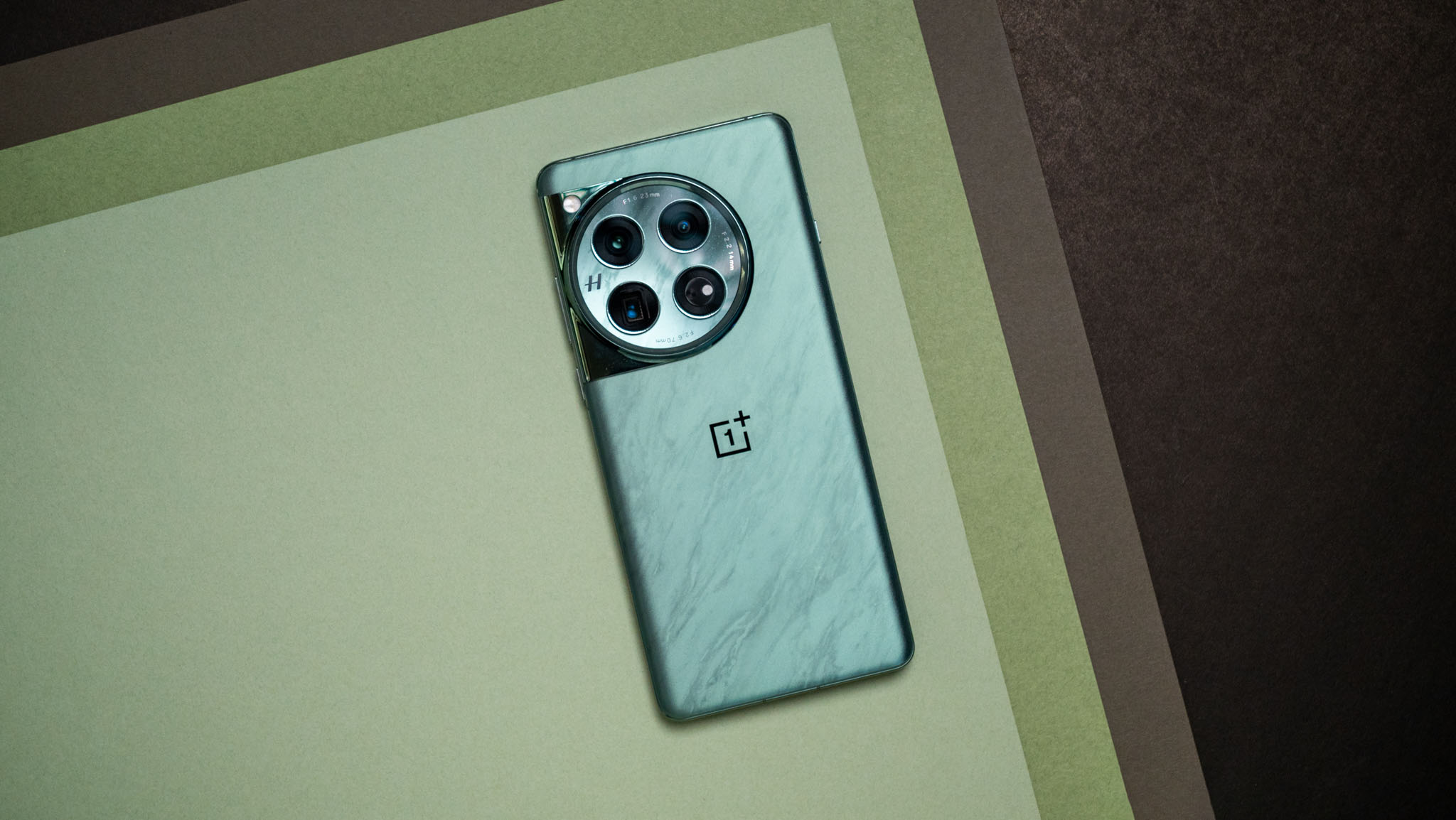
The obvious alternative to the Xiaomi 14 is the OnePlus 12. Both phones cost roughly the same in key markets like India and the U.K., but the OnePlus 12 has a larger screen that goes up to 4500 nits and a better design. Both devices are evenly matched in other areas, and having used both extensively, I don't think you can go wrong with either choice. It comes to what UI you're more comfortable with, because even the cameras are largely the same.
I'm not even going to suggest the Galaxy S24 as a contender this time; Samsung went back to its old habit of using Exynos chipsets in most countries, and while the S24 has a lot to offer, its auxiliary cameras aren't as good as what you get on the Xiaomi 14, and it costs a lot more.
Xiaomi 14: Should you buy it?
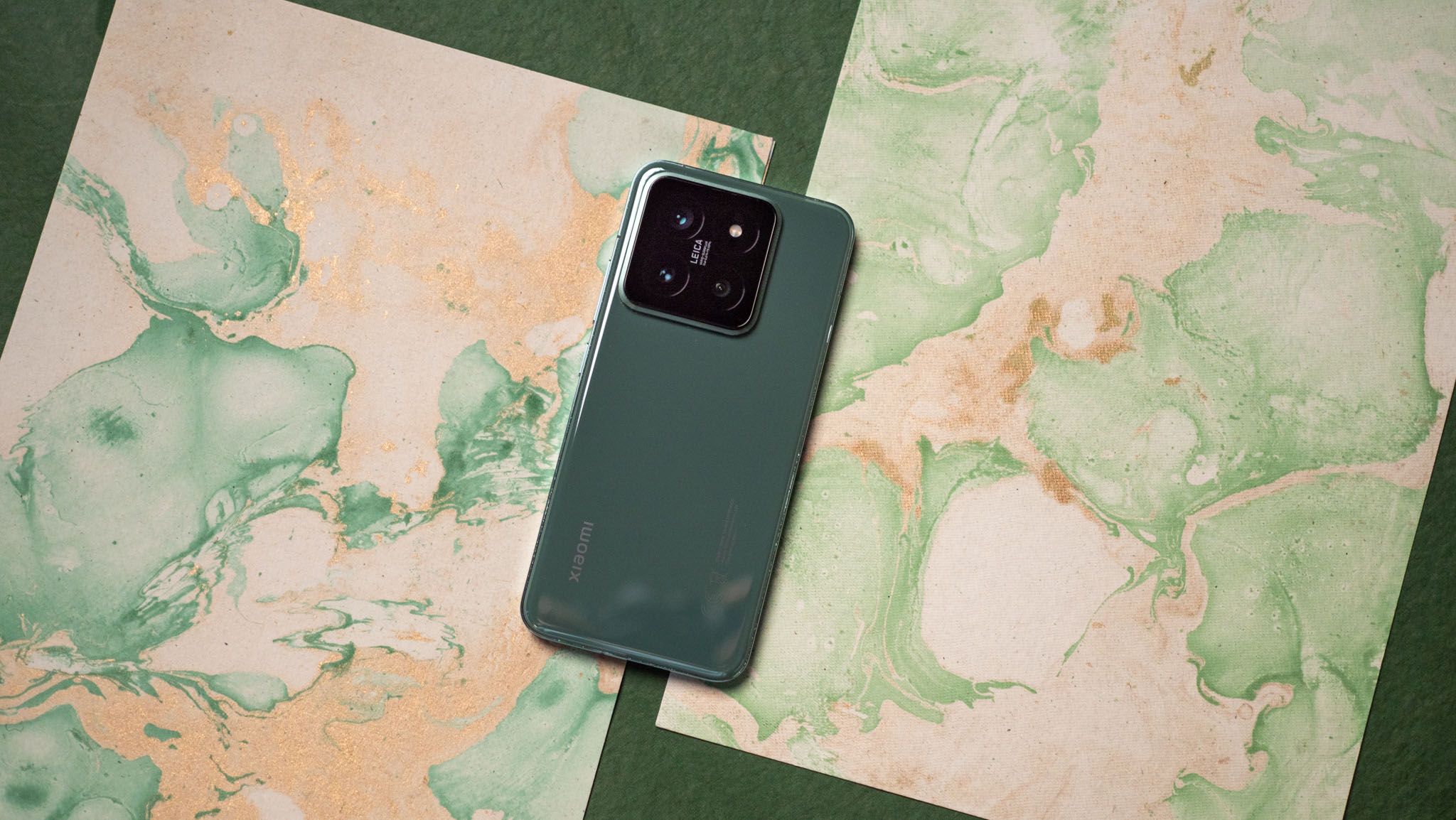
You should buy this if:
- You need a smallish phone with the latest hardware
- You want a versatile camera package that takes amazing photos
- You need a phone that lasts all day and doesn't take too long to charge
- You need IP68 ingress protection
You shouldn't buy this if:
- You need timely software updates
- You want a bloat-free software
Overall, I really like what Xiaomi did this year. The Xiaomi 14 retains the same design as last year, and while I didn't like the glossy-backed green variant, the black model alleviates those problems, and most of you reading this will put a case on the phone anyway, so the choice of materials isn't really relevant. What you'll end up liking is the size, and it makes other flagships look massive by comparison.
The phone has terrific hardware, and while I didn't see many positive changes with Xiaomi's software overhaul, I will note that it is fluid and not as annoying in daily use as MIUI. Xiaomi hasn't sorted out all the issues just yet; the Xiaomi 14 is prone to be aggressive with memory management, and there is a lot of bloatware pre-installed. I still believe that what Xiaomi actually needs to do is give the UI a redesign that brings it closer to Material You, but I don't see that materializing.
The biggest reason for buying the Xiaomi 14 is the cameras, and Xiaomi did all the right things here. The phone has one of the strongest camera packages in this segment, and it takes incredible photos and videos in just about any scenario. It's closer to the Xiaomi 13 Ultra than it has any right to be, and I'm interested in seeing how the brand manages to differentiate the Xiaomi 14 Ultra this time around.
On the whole, the Xiaomi 14 has everything you need in a 2024 flagship, and it is one of the best Xiaomi phones around. If you're using an older Xiaomi phone and are considering a switch or want to make the move from another brand, you'll find plenty to like with the device.

Harish Jonnalagadda is Android Central's Senior Editor overseeing mobile coverage. In his current role, he leads the site's coverage of Chinese phone brands, networking products, and AV gear. He has been testing phones for over a decade, and has extensive experience in mobile hardware and the global semiconductor industry. Contact him on Twitter at @chunkynerd.
You must confirm your public display name before commenting
Please logout and then login again, you will then be prompted to enter your display name.


